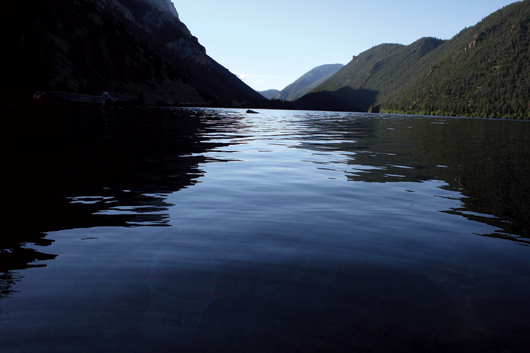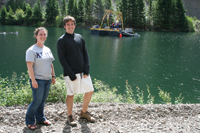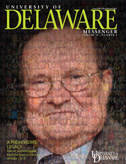From rocks to stars
Geologists explore origins of life

RESEARCH | A deep lake in rural British Columbia might seem an unusual place to seek information about life on other planets, but that’s exactly what researchers are doing there.

Scientists in fields ranging from nutrition and robotics to astrobiology and geochemistry are using the site not only to gather valuable data about the origins of life but also to develop tools for exploring unknown environments of all types.
Jennifer Biddle, assistant professor of marine biosciences at UD, is one of the researchers contributing to the work, known as the Pavilion Lake Research Project (PLRP). The project is an international, multidisciplinary science and exploration effort to explain the origin of freshwater microbialites, which are carbonate structures that form in water with the help of microorganisms.
These structures may hold answers to some of the most profound questions we can ask, says Joe Russell, a graduate student working with Biddle: What did some of the earliest life on this planet look like? How did it survive and evolve?
“Fossil records show that for a couple billion years of our planet’s history, life existed similarly to how it does on the microbialites of Pavilion and Kelly lakes,” Russell says. “If these structures were such an important first step in Earth’s life history, might they also be something to look for when we eventually explore other planetary bodies in our solar system and beyond?”
Biddle and Russell’s experiment is examining how microbes living on microbialites in the depths of Pavilion Lake react when they are moved to a shallower site.
“We hope to better understand the bacterial communities that live on the surface of the microbialites and drive their formation,” Biddle says. “Because microbial communities can double every 20 minutes, we could possibly see changes in DNA in periods as short as a week or two.”
While the PLRP is yielding valuable scientific data for researchers like Biddle and Russell, the story behind the project, which is funded by NASA and the Canadian Space Agency, is interesting in itself.
“We’re taking an analog mission approach to the science and exploration—complete with a mobile mission command center,” Biddle says. “With the space shuttle no longer launching, NASA is supporting work like the Pavilion Lake project for its potential to generate new knowledge about how to explore challenging environments.”
One-man submarines and autonomous underwater vehicles are used to explore and map remote sites like Pavilion Lake and Kelly Lake, which is located about 12 miles northwest of Pavilion.
“One disadvantage of a single manned sub is that only one person is seeing and observing things in real time,” Biddle points out. “Even if they take a video, the rest of us might wait hours to see it. That means decisions are slowed, and science might be impeded. So this year the team designed a way to have a sub tethered to a cable, sending video feeds to the surface, with the communications team shooting video back to the mobile mission command center.”
For Russell, few experiences can top traveling to Pavilion and plunging into the lake’s chilly waters to retrieve the plastic boxes holding his samples.
“This is the only environment where microbialites are found at such a variety of depths,” he says. “Our hope is that these varying growth environments, characterized by differential access to light, will highlight the features of microbialites that made them so successful on early Earth and could possibly aid their formation on other planetary bodies.”
Article by Diane Kukich , AS73, 84M





